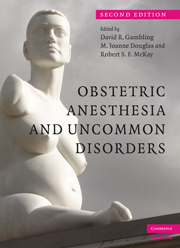Book contents
- Frontmatter
- Contents
- List of plates
- List of contributors
- Preface
- Section 1 Cardiovascular and respiratory disorders
- Section 2 Musculoskeletal disorders
- Section 3 Nervous system disorders
- Section 4 Metabolic disorders
- Section 5 Other disorders
- 17 Blood disorders
- 18 Infectious diseases in pregnancy
- 19 Dermatoses
- 20 Psychiatric disorders in pregnancy
- 21 Malignancy and pregnancy
- 22 Pregnancy and transplantation
- 23 Autoimmune diseases
- Index
- Plate Section
- References
19 - Dermatoses
from Section 5 - Other disorders
Published online by Cambridge University Press: 19 October 2009
- Frontmatter
- Contents
- List of plates
- List of contributors
- Preface
- Section 1 Cardiovascular and respiratory disorders
- Section 2 Musculoskeletal disorders
- Section 3 Nervous system disorders
- Section 4 Metabolic disorders
- Section 5 Other disorders
- 17 Blood disorders
- 18 Infectious diseases in pregnancy
- 19 Dermatoses
- 20 Psychiatric disorders in pregnancy
- 21 Malignancy and pregnancy
- 22 Pregnancy and transplantation
- 23 Autoimmune diseases
- Index
- Plate Section
- References
Summary
Introduction
The hormonal environment during pregnancy leads to significant changes in the integumentary system of virtually all pregnant women. In a few, skin changes may become pathologic. Likewise, women with nonpregnancy-related skin disorders may become pregnant, and the pregnancy may affect the course of the disease or, alternatively, the skin disorder may adversely affect the mother or the fetus. This chapter will focus on (1) normal changes of the skin during pregnancy, (2) pathologic skin disorders that occur primarily in pregnant women, (3) other dermatologic disorders with significant effects on the mother and/or fetus, and (4) the anesthetic considerations for women with these dermatologic disorders. Certain diseases that affect the skin in pregnancy, such as autoimmune diseases, are discussed in detail in other chapters. These diseases may be mentioned only in passing in the current chapter, even though the degree of skin involvement may be substantial.
Functions of the skin
The integumentary system comprises approximately 16% of body weight. It is a system containing multiple tissues including skin itself (epidermis, dermis, and hypodermis), glands (sudoriferous and sebaceous), hair, nails, nervous tissue, blood vessels, and even muscle (piloerector muscles). Although considered a single organ, the skin serves multiple discrete and interactive functions. As a barrier, it protects the body from physical agents, mechanical injury, dehydration, and ultraviolet radiation. The proper balance of collagen and elastic fibers gives skin flexibility while preventing overstretching. The skin's secretory glands, fat, and vascular system help regulate body temperature.
- Type
- Chapter
- Information
- Obstetric Anesthesia and Uncommon Disorders , pp. 343 - 362Publisher: Cambridge University PressPrint publication year: 2008



